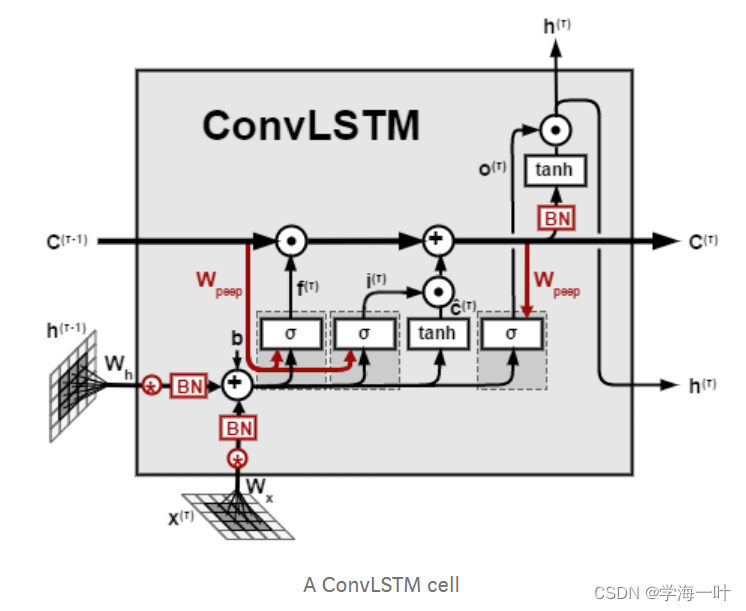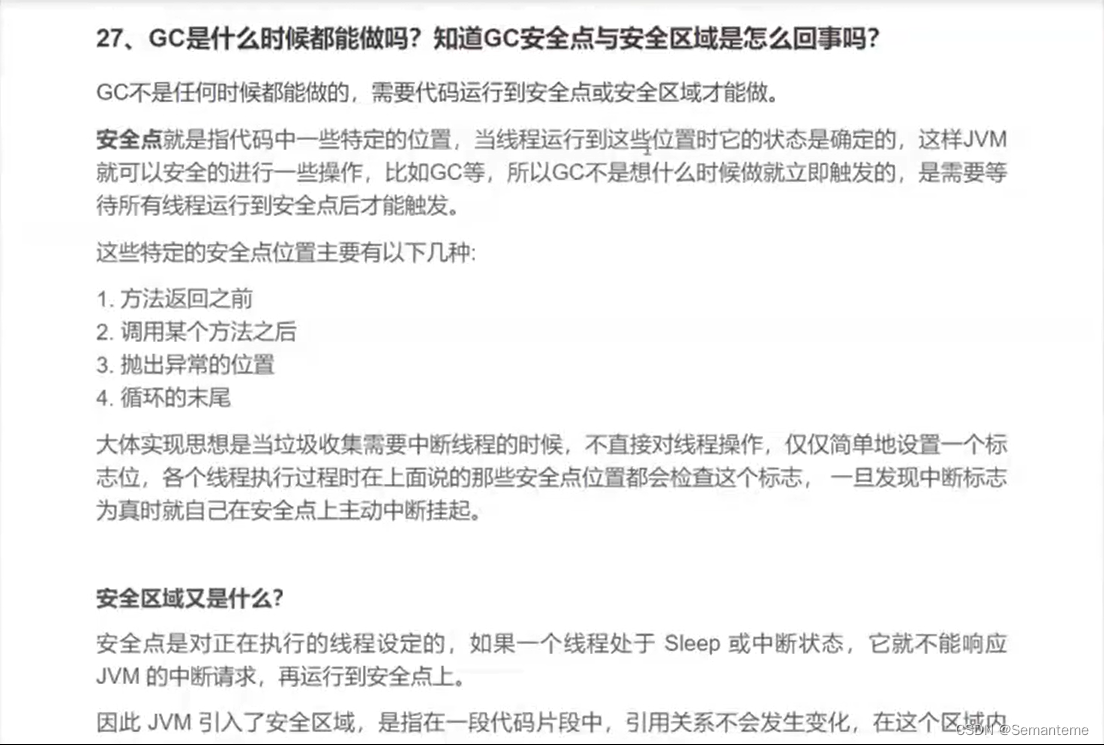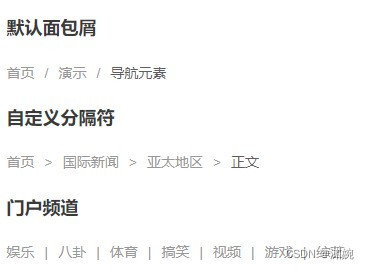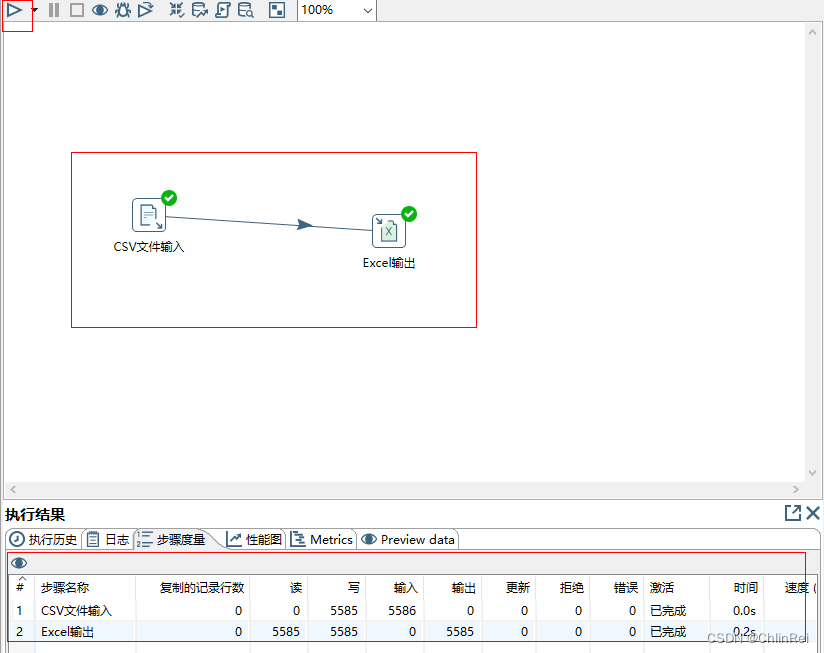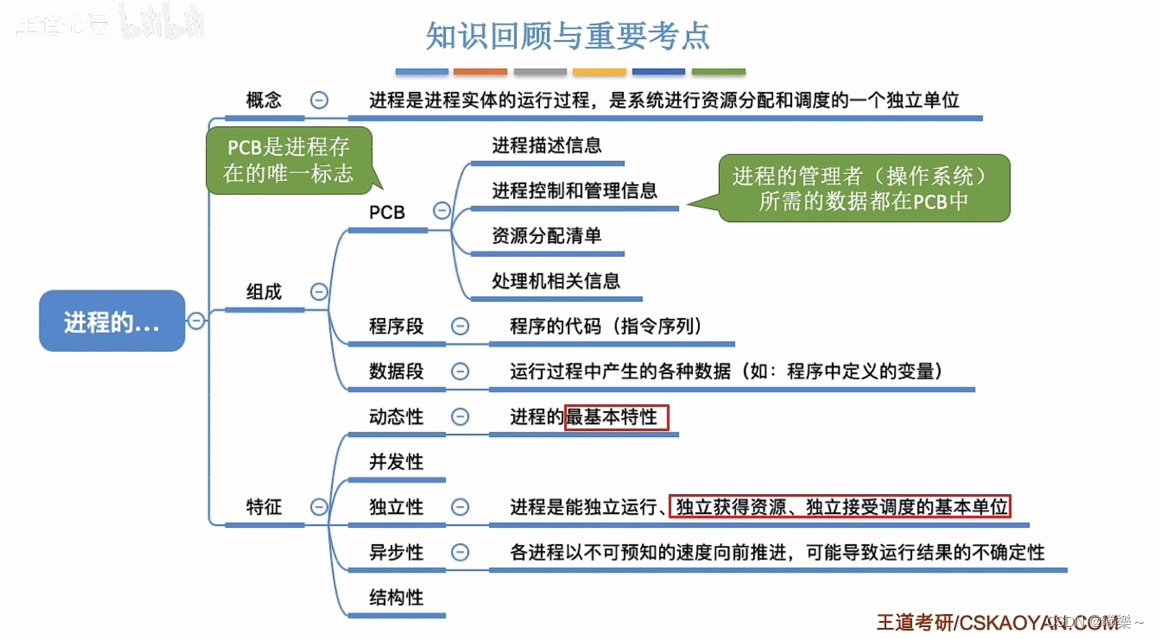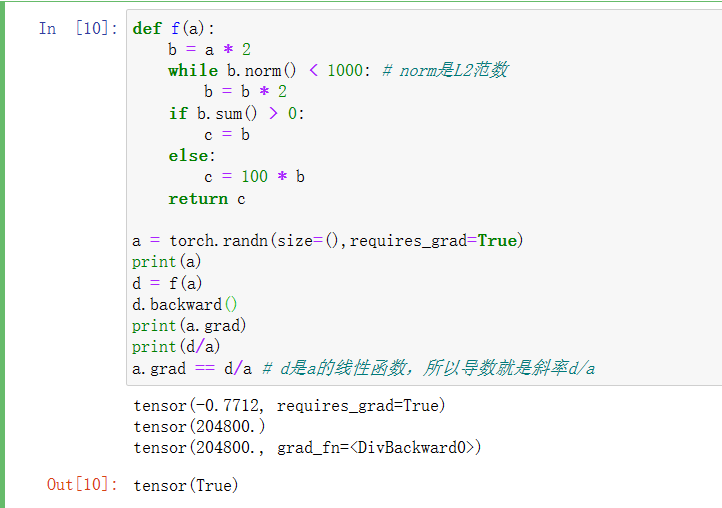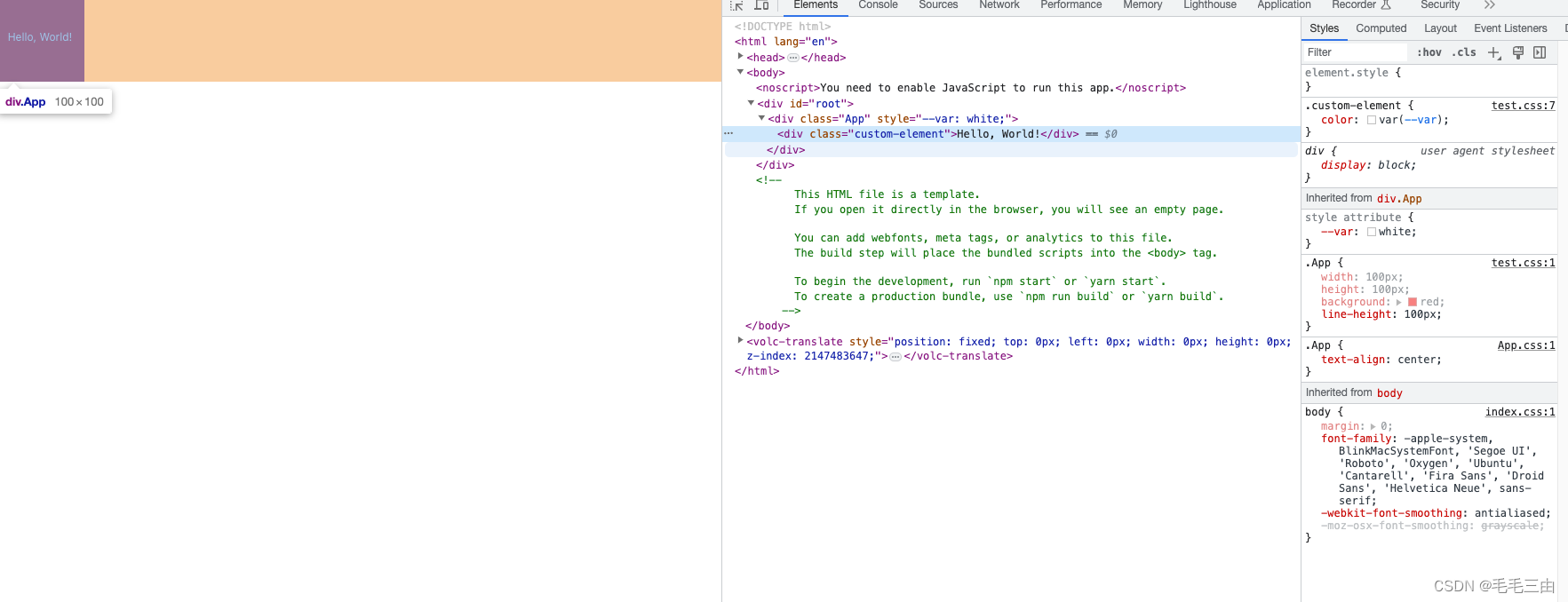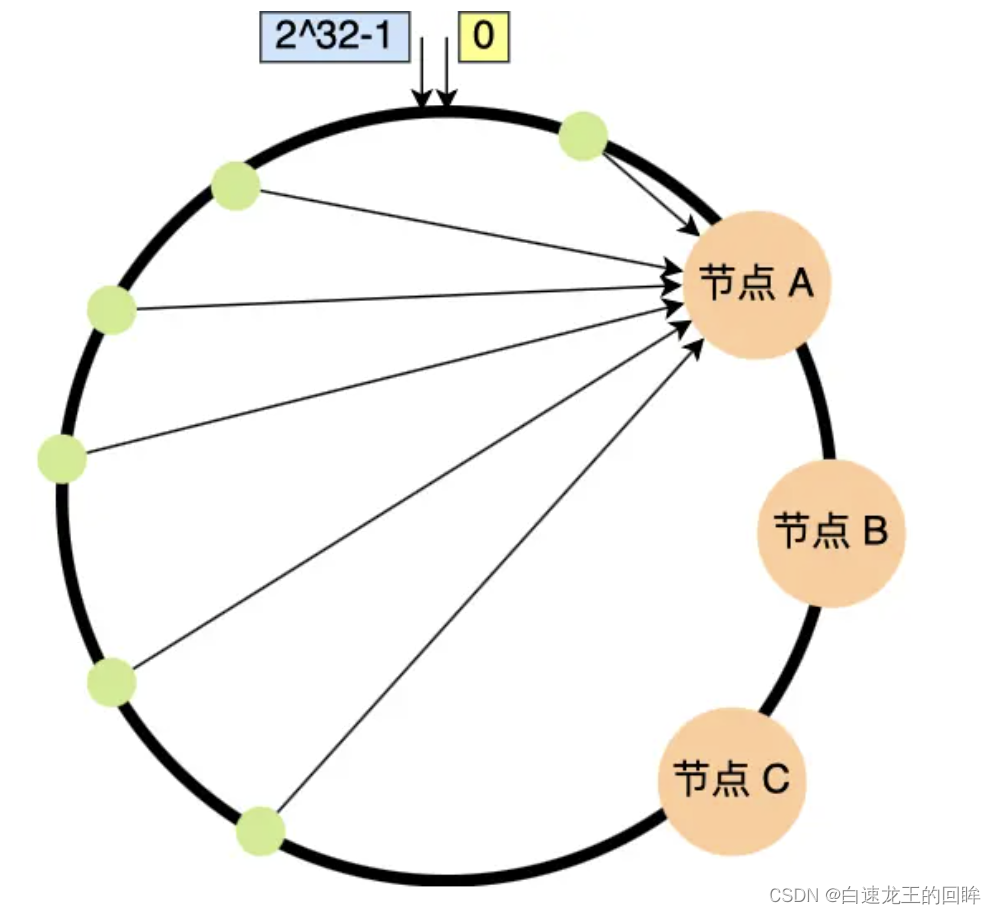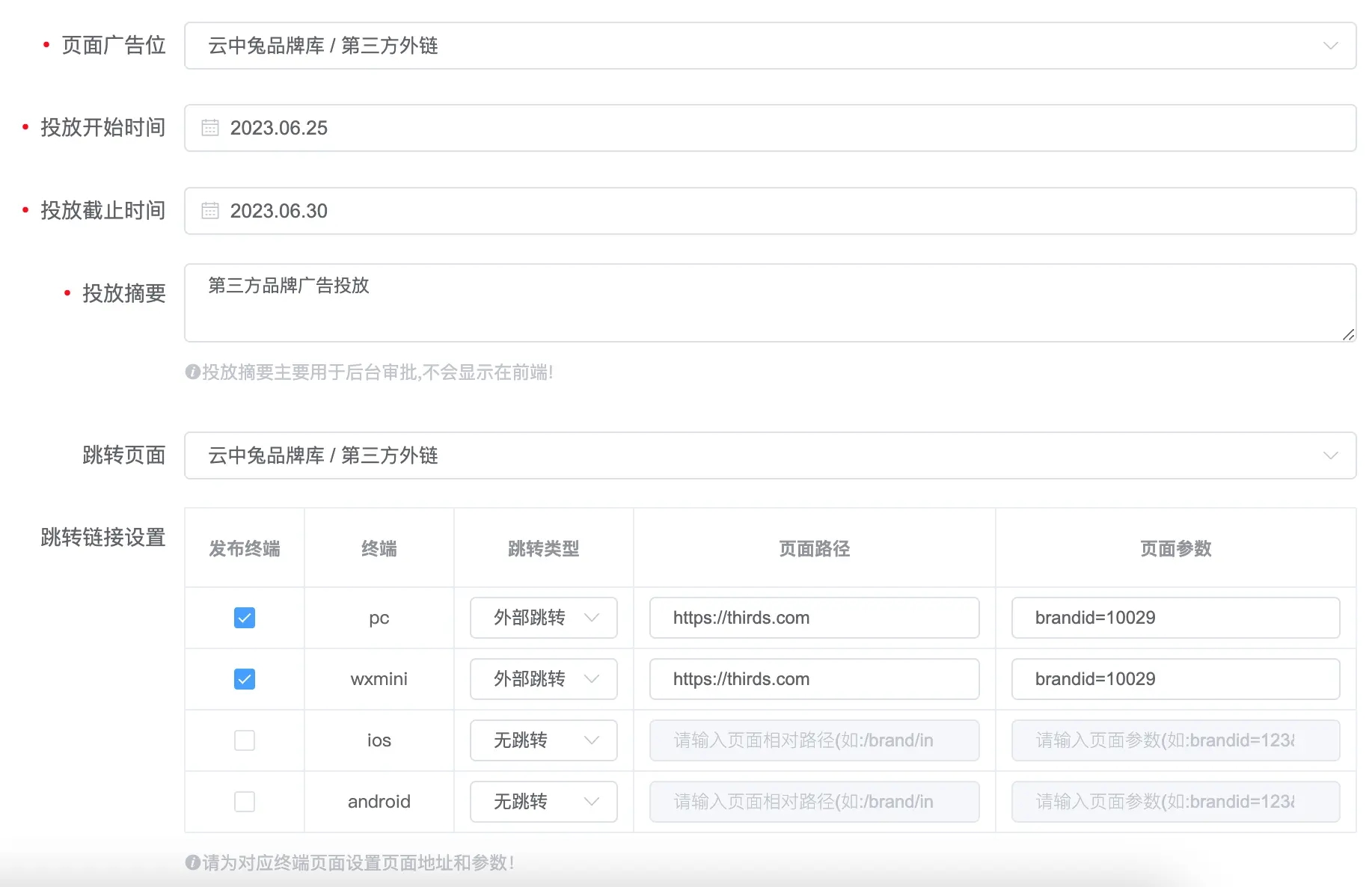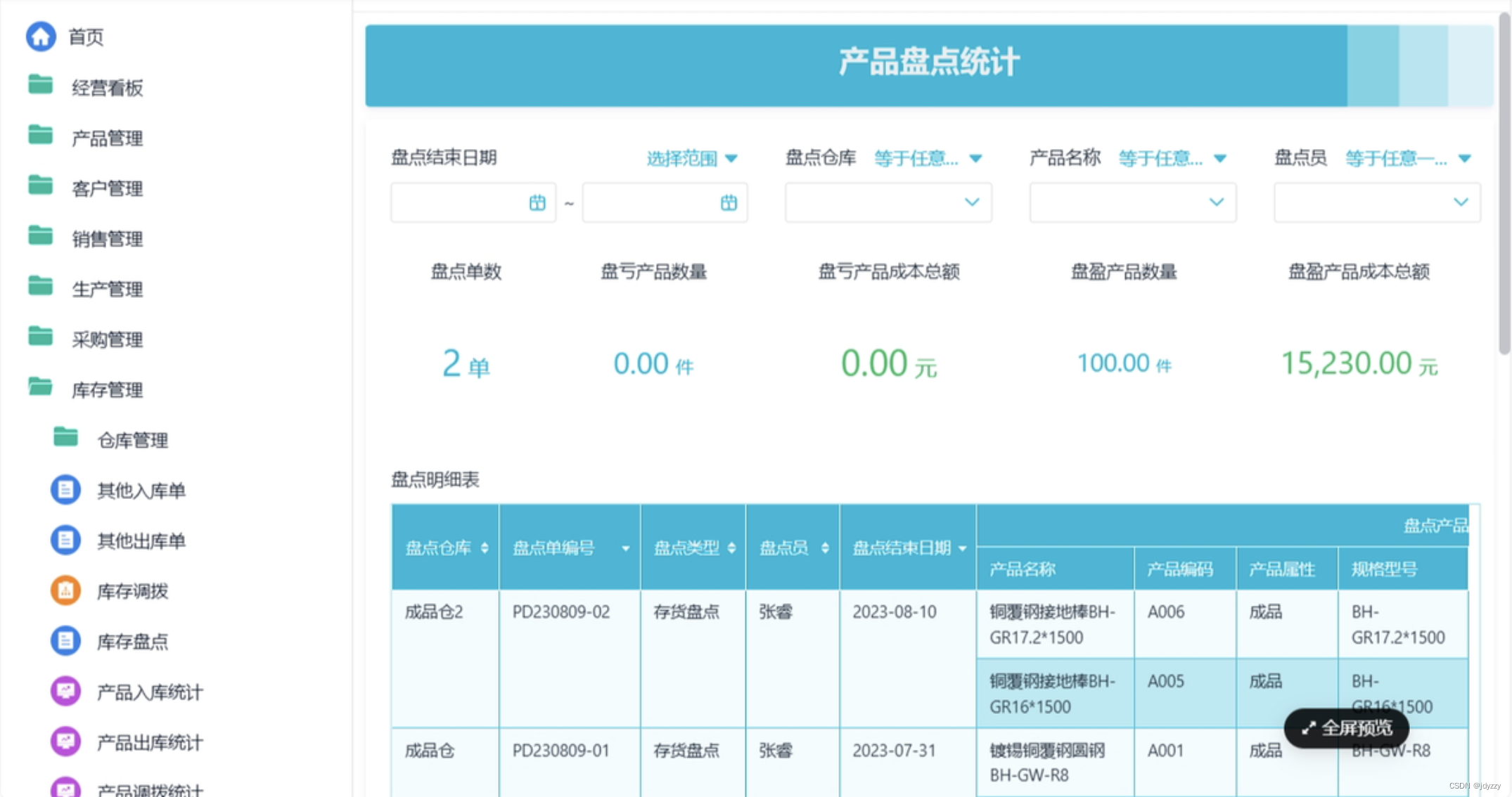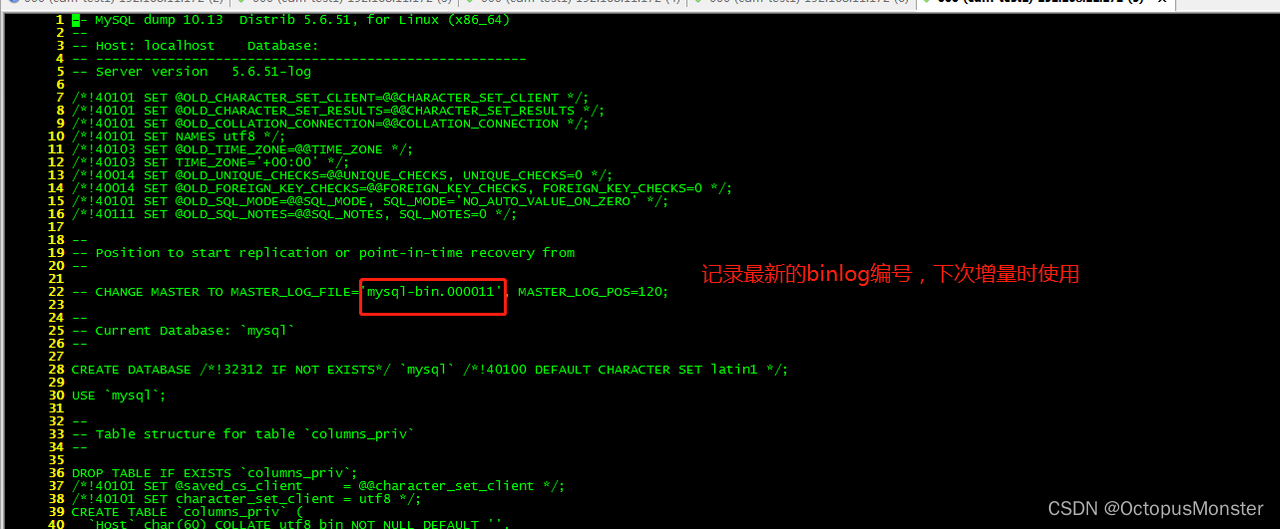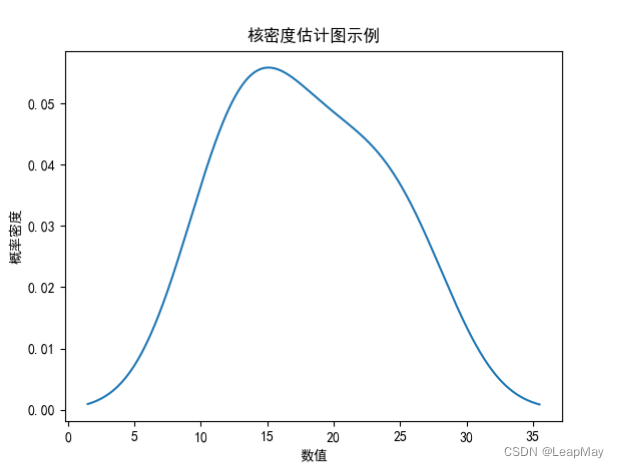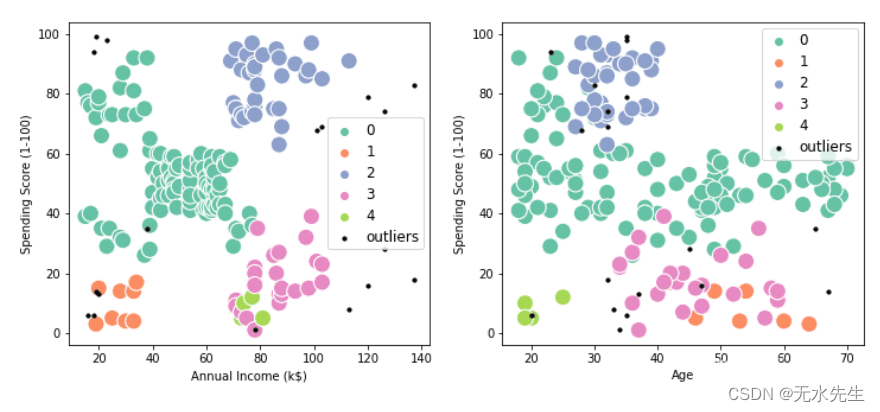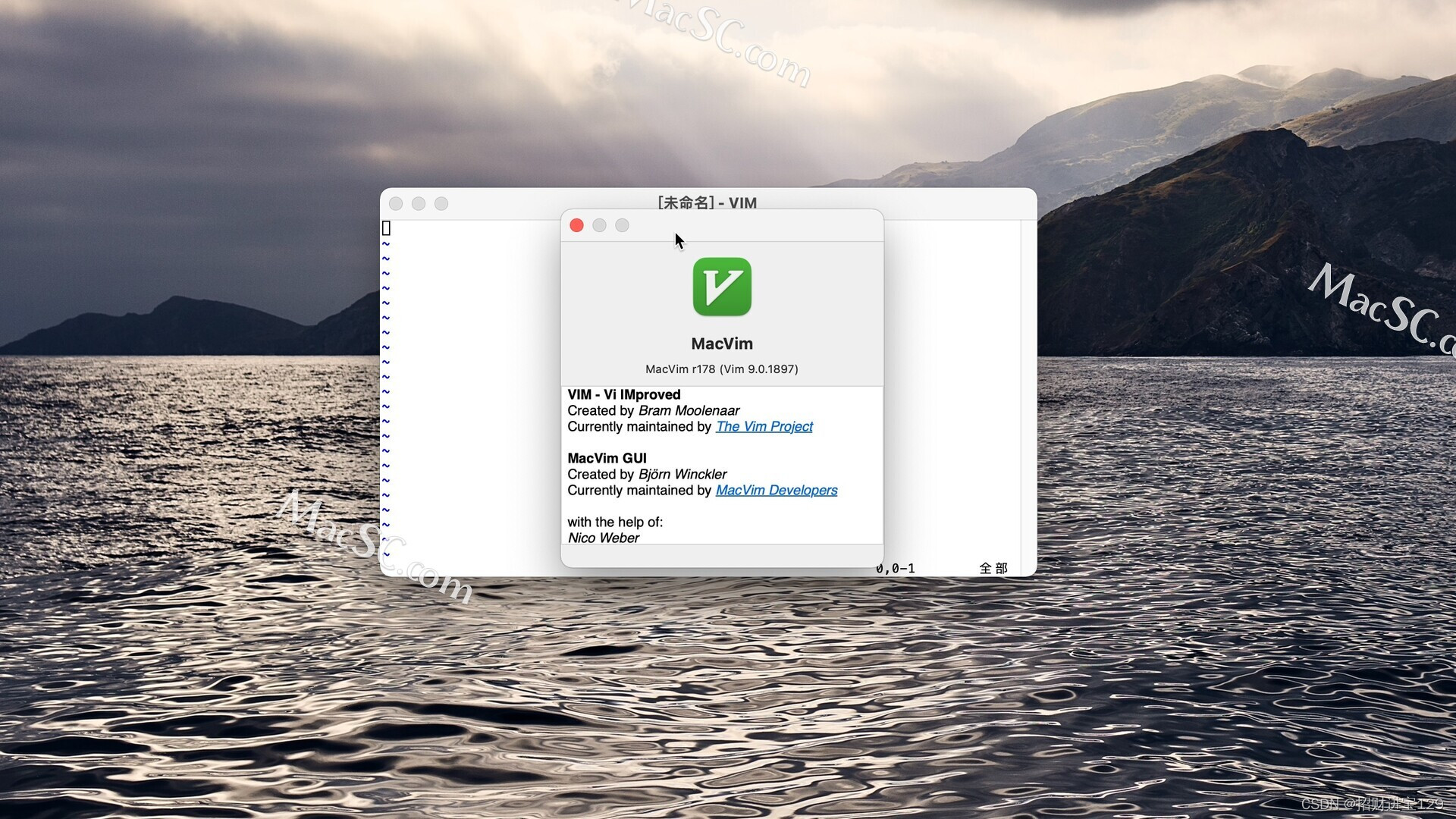Callable 和 FutureTask 可以创建带返回值的线程,那它是怎么实现的呢?笔者下面分析,先看看它是怎么使用的
1、Callable FutureTask使用
新建 Name类,实现 Callable 接口,返回 String 类型值
package com.wsjzzcbq.java.thread;
import java.time.LocalDateTime;
import java.util.concurrent.Callable;
import java.util.concurrent.TimeUnit;
/**
* Name
*
* @author wsjz
* @date 2023/09/12
*/
public class Name implements Callable<String> {
@Override
public String call() throws Exception {
//为了方便测试线程,让线程睡眠4秒钟
System.out.println("开始执行:" + LocalDateTime.now());
TimeUnit.SECONDS.sleep(4);
return "来是空言去绝踪,月斜楼上五更钟";
}
}
新建 CallableLearn 类,用于测试
package com.wsjzzcbq.java.thread;
import java.time.LocalDateTime;
import java.util.concurrent.ExecutionException;
import java.util.concurrent.FutureTask;
/**
* CallableLearn
*
* @author wsjz
* @date 2023/09/12
*/
public class CallableLearn {
public static void main(String[] args) throws ExecutionException, InterruptedException {
Name name = new Name();
FutureTask<String> futureTask = new FutureTask<>(name);
new Thread(futureTask).start();
//获取返回值
String returnValue = futureTask.get();
System.out.println("获取结果:" + LocalDateTime.now());
System.out.println(returnValue);
}
}
测试运行
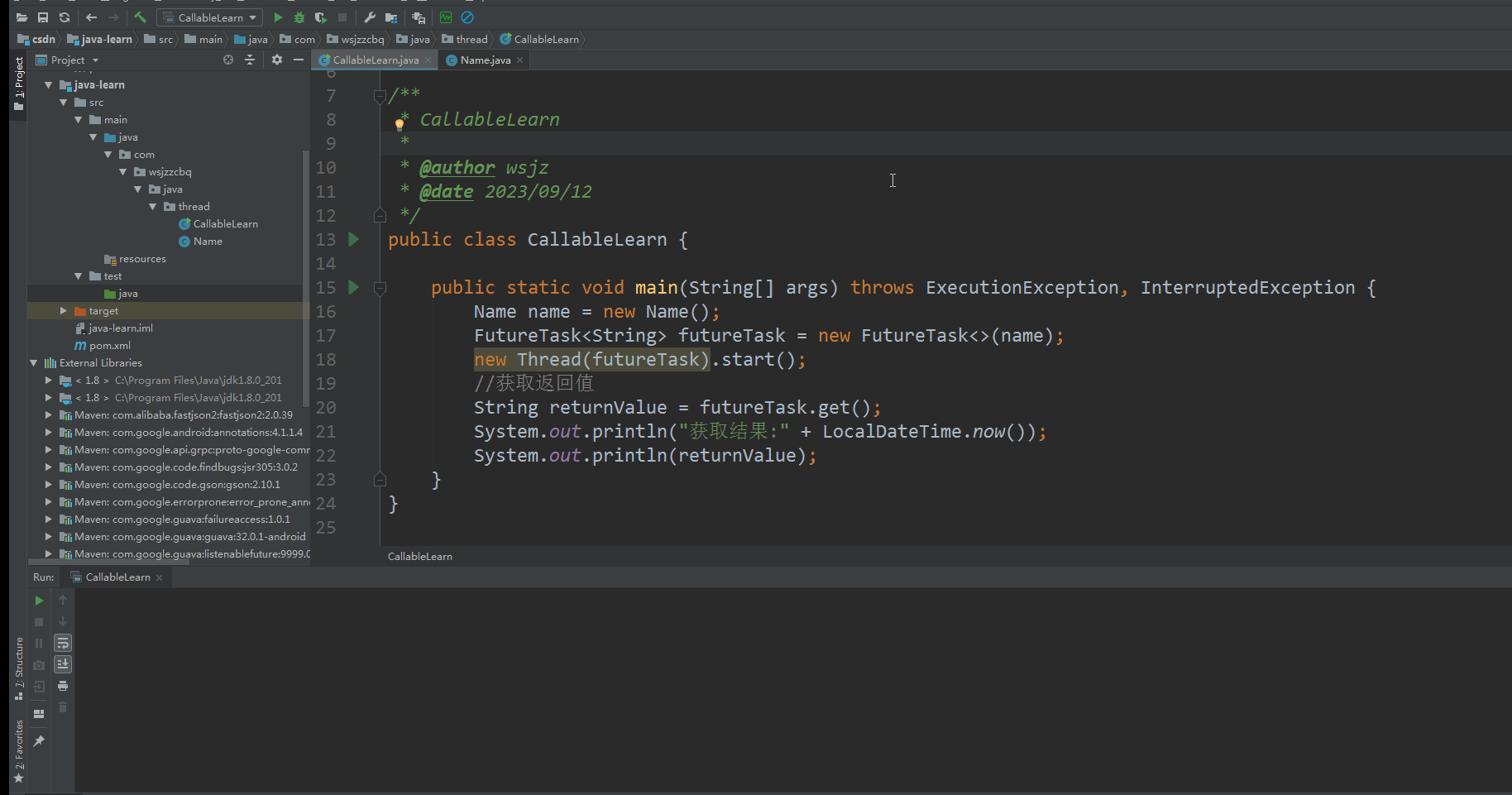
可以看到,在线程运行完 Name类中 call方法后,futureTask.get() 获取到线程执行结果
2、源码分析
futureTask.get() 是怎么拿到线程执行的结果的呢?下面分析
首先,大家想一个事情。线程是异步的,彼此之间是没有通信的。即主线程不知道执行call方法的线程什么时候执行完,所以在主线程没有拿到返回值之前它一定是处于等待的状态,而主线程能拿到结果,线程的run方法又是没有返回值的,所以一定是执行call方法的线程执行完,将结果存放起来,然后通知主线程“我”执行完了,然后主线程从“存放的地方”获取结果
下面看源码
先看FutureTask
FutureTask 可以作为Thread 类构造函数的参数,说明它一定实现了 Runnable 接口
看源码知道 实现了 RunnableFuture 接口,而 RunnableFuture 同时实现了 Runnable 接口和Future 接口
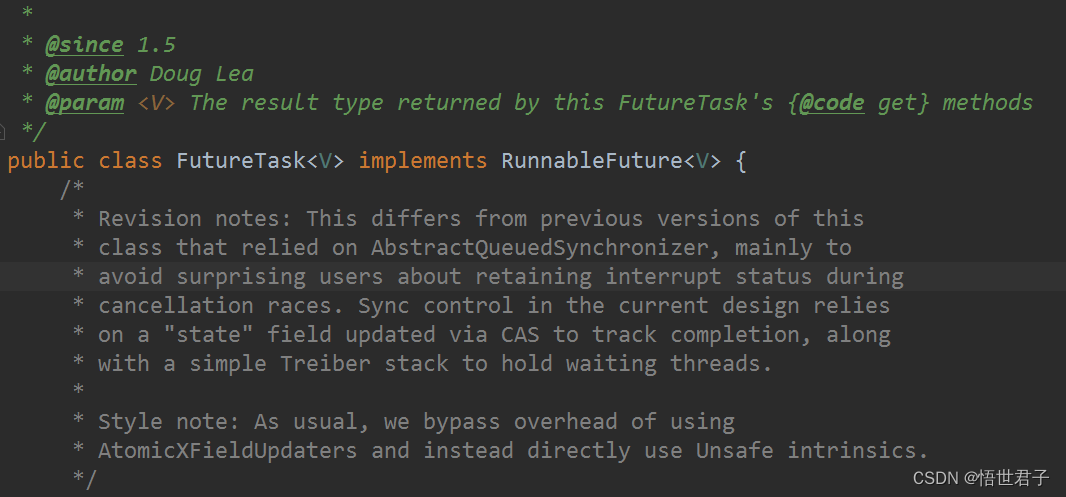
RunnableFuture
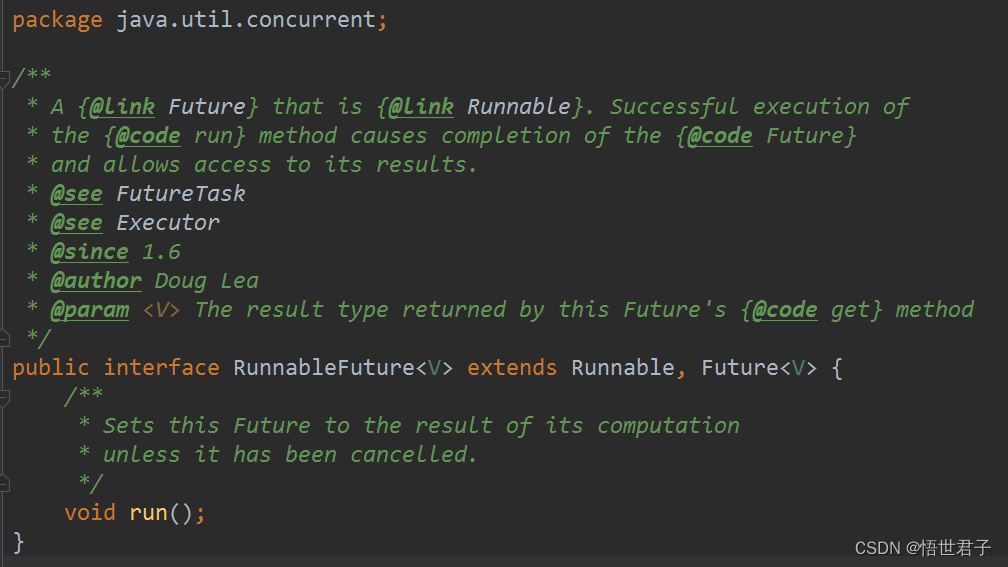
下面分析 FutureTask
看下图代码
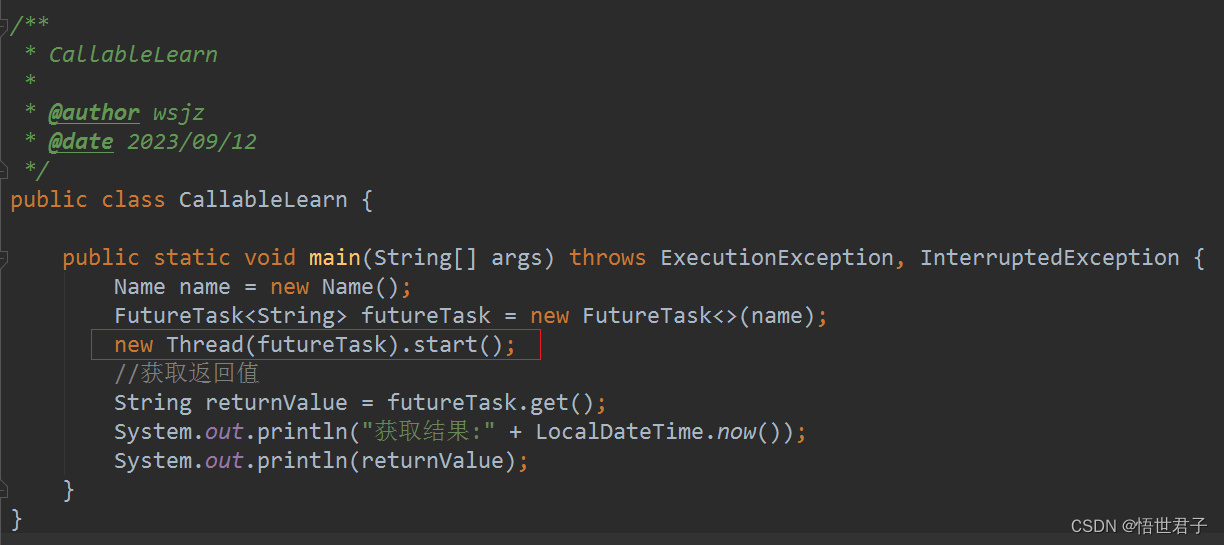
new Thread,创建一个线程,并调用线程的 start 方法,当线程运行起来时,实际是运行 Runnable 中的 run 方法,FutureTask 实现了Runnable 的 run 方法,则会运行 FutureTask中的run 方法,我们直接看 FutureTask 中的 run方法
下面是 FutureTask 中的 run方法
public void run() {
if (state != NEW ||
!UNSAFE.compareAndSwapObject(this, runnerOffset,
null, Thread.currentThread()))
return;
try {
Callable<V> c = callable;
if (c != null && state == NEW) {
V result;
boolean ran;
try {
result = c.call();
ran = true;
} catch (Throwable ex) {
result = null;
ran = false;
setException(ex);
}
if (ran)
set(result);
}
} finally {
// runner must be non-null until state is settled to
// prevent concurrent calls to run()
runner = null;
// state must be re-read after nulling runner to prevent
// leaked interrupts
int s = state;
if (s >= INTERRUPTING)
handlePossibleCancellationInterrupt(s);
}
}run方法中的 state 是从哪来的?我们先看它的构造函数
/**
* Creates a {@code FutureTask} that will, upon running, execute the
* given {@code Callable}.
*
* @param callable the callable task
* @throws NullPointerException if the callable is null
*/
public FutureTask(Callable<V> callable) {
if (callable == null)
throw new NullPointerException();
this.callable = callable;
this.state = NEW; // ensure visibility of callable
}在构造函数中,传入Callable 接口实现,并将它赋值给变量 callable,然后让state 的值等于 NEW
NEW又是什么呢?看 FutureTask 的成员变量
/**
* The run state of this task, initially NEW. The run state
* transitions to a terminal state only in methods set,
* setException, and cancel. During completion, state may take on
* transient values of COMPLETING (while outcome is being set) or
* INTERRUPTING (only while interrupting the runner to satisfy a
* cancel(true)). Transitions from these intermediate to final
* states use cheaper ordered/lazy writes because values are unique
* and cannot be further modified.
*
* Possible state transitions:
* NEW -> COMPLETING -> NORMAL
* NEW -> COMPLETING -> EXCEPTIONAL
* NEW -> CANCELLED
* NEW -> INTERRUPTING -> INTERRUPTED
*/
private volatile int state;
private static final int NEW = 0;
private static final int COMPLETING = 1;
private static final int NORMAL = 2;
private static final int EXCEPTIONAL = 3;
private static final int CANCELLED = 4;
private static final int INTERRUPTING = 5;
private static final int INTERRUPTED = 6;
/** The underlying callable; nulled out after running */
private Callable<V> callable;
/** The result to return or exception to throw from get() */
private Object outcome; // non-volatile, protected by state reads/writes
/** The thread running the callable; CASed during run() */
private volatile Thread runner;
/** Treiber stack of waiting threads */
private volatile WaitNode waiters;NEW 的值是0。上面的注释说明了state状态的变化过程,从NEW到 NORMAL,过程结束
下面回到 FutureTask 的 run方法

先判断 state 不等于NEW 或者将当前线程赋值给FutureTask 成员变量 runner 失败的话,直接 return
这里因为构造的时候 state已经是NEW了,所以不会进入if 判断,看下面 try 里面的代码,将callable 赋值给 c,判断 c 不等于null 并且 state == NEW,调用c的 call方法,即 Name 类的call方法,call方法运行完成后,将结果赋值给 result 变量,将 ran 变量赋值 true。下面 if(ran) 条件成立,调用set(result)方法
下面看 set(result)方法
/**
* Sets the result of this future to the given value unless
* this future has already been set or has been cancelled.
*
* <p>This method is invoked internally by the {@link #run} method
* upon successful completion of the computation.
*
* @param v the value
*/
protected void set(V v) {
if (UNSAFE.compareAndSwapInt(this, stateOffset, NEW, COMPLETING)) {
outcome = v;
UNSAFE.putOrderedInt(this, stateOffset, NORMAL); // final state
finishCompletion();
}
}set 方法 UNSAFE.compareAndSwapInt(this, stateOffset, NEW, COMPLETING) 会以线程安全的方式将 state 修改为 COMPLETING,修改成功则将call 方法返回值赋值给 outcome,然后将state修改为 NORMAL,然后执行 finishCompletion() 方法
/**
* Removes and signals all waiting threads, invokes done(), and
* nulls out callable.
*/
private void finishCompletion() {
// assert state > COMPLETING;
for (WaitNode q; (q = waiters) != null;) {
if (UNSAFE.compareAndSwapObject(this, waitersOffset, q, null)) {
for (;;) {
Thread t = q.thread;
if (t != null) {
q.thread = null;
LockSupport.unpark(t);
}
WaitNode next = q.next;
if (next == null)
break;
q.next = null; // unlink to help gc
q = next;
}
break;
}
}
done();
callable = null; // to reduce footprint
}finishCompletion() 方法会先将等待节点 waiters 赋值给 q,然后判断 q 不等于 null,如果 q 不等于空,说明有等待节点,有等待节点的话,UNSAFE.compareAndSwapObject(this, waitersOffset, q, null) 将 waiters 修改为null,然后取出 q 中等待的线程,如果等待的线程不为空的话,使用 LockSupport.unpark(t) 唤醒等待线程
这里读者可能会有疑问,等待节点 waiters 是从哪来的?我们看 FutureTask 的 get 方法
/**
* @throws CancellationException {@inheritDoc}
*/
public V get() throws InterruptedException, ExecutionException {
int s = state;
if (s <= COMPLETING)
s = awaitDone(false, 0L);
return report(s);
}这里先判断 state,如果小于等于 COMPLETING 的话,进入 awaitDone(false, 0L),否则直接进入report(s)。什么意思?因为 call 方法是单独的线程运行的,所以当主线程 get 的时候,可能call方法已经运行完了,所以这里判断一下状态,一旦运行完了直接进入 report(s),就不用等待了
我们先看 awaitDone(false, 0L) 方法
/**
* Awaits completion or aborts on interrupt or timeout.
*
* @param timed true if use timed waits
* @param nanos time to wait, if timed
* @return state upon completion
*/
private int awaitDone(boolean timed, long nanos)
throws InterruptedException {
final long deadline = timed ? System.nanoTime() + nanos : 0L;
WaitNode q = null;
boolean queued = false;
for (;;) {
if (Thread.interrupted()) {
removeWaiter(q);
throw new InterruptedException();
}
int s = state;
if (s > COMPLETING) {
if (q != null)
q.thread = null;
return s;
}
else if (s == COMPLETING) // cannot time out yet
Thread.yield();
else if (q == null)
q = new WaitNode();
else if (!queued)
queued = UNSAFE.compareAndSwapObject(this, waitersOffset,
q.next = waiters, q);
else if (timed) {
nanos = deadline - System.nanoTime();
if (nanos <= 0L) {
removeWaiter(q);
return state;
}
LockSupport.parkNanos(this, nanos);
}
else
LockSupport.park(this);
}
}这里是一个死循环,先判断线程有没有中断;然后判断 state 是不是已经完成 COMPLETING,如果是 COMPLETING ,直接返回;下面判断 q 等于null的话,新建 WaitNode 等于 q,new WaitNode 的时候会把当前线程放进去;之后如果 queued 等于 false 的话,会通过 queued = UNSAFE.compareAndSwapObject(this, waitersOffset, q.next = waiters, q) 将 q 赋值给 waiters;最后如果其他 if 情况都没进的话,执行 LockSupport.park(this) 让线程阻塞
WaitNode
/**
* Simple linked list nodes to record waiting threads in a Treiber
* stack. See other classes such as Phaser and SynchronousQueue
* for more detailed explanation.
*/
static final class WaitNode {
volatile Thread thread;
volatile WaitNode next;
WaitNode() { thread = Thread.currentThread(); }
}这里我们假设 call 方法执行时间很长,当前 get 的时候它还没执行完,初始 WaitNode q = null,所以会进入if分支 q = new WaitNode(),进入下一次循环,如果这时 call 方法还没执行完成,会进入分支 queued = UNSAFE.compareAndSwapObject(this, waitersOffset, q.next = waiters, q),然后进入下一轮循环,进入最后的 else 分支 LockSupport.park(this) ,让当前 get 的线程等待。然后回顾上面当 call 方法执行完成后,会调用 finishCompletion() 方法唤醒等待的线程,即唤醒调用 get 方法阻塞的线程,调用 get 方法阻塞的线程被唤醒后,会继续开始新一轮循环,此时 state 等于 NORMAL,大于 COMPLETING,直接 return 返回。返回后进入 report(s) 方法
/**
* Returns result or throws exception for completed task.
*
* @param s completed state value
*/
@SuppressWarnings("unchecked")
private V report(int s) throws ExecutionException {
Object x = outcome;
if (s == NORMAL)
return (V)x;
if (s >= CANCELLED)
throw new CancellationException();
throw new ExecutionException((Throwable)x);
}state 等于 NORMAL,返回 outcome,即 call 方法的返回值。此时 get 方法拿到 call 方法的返回值
至此完

